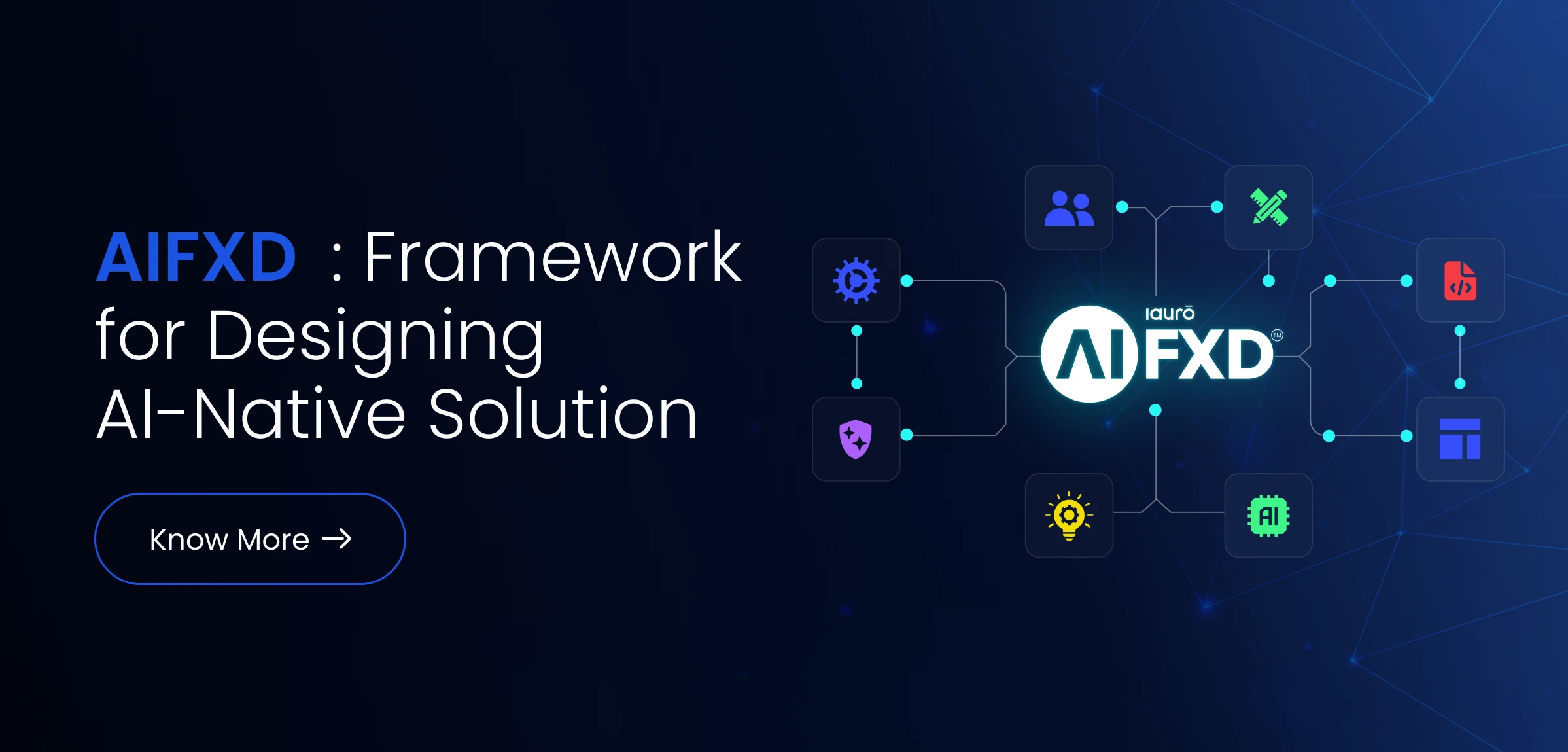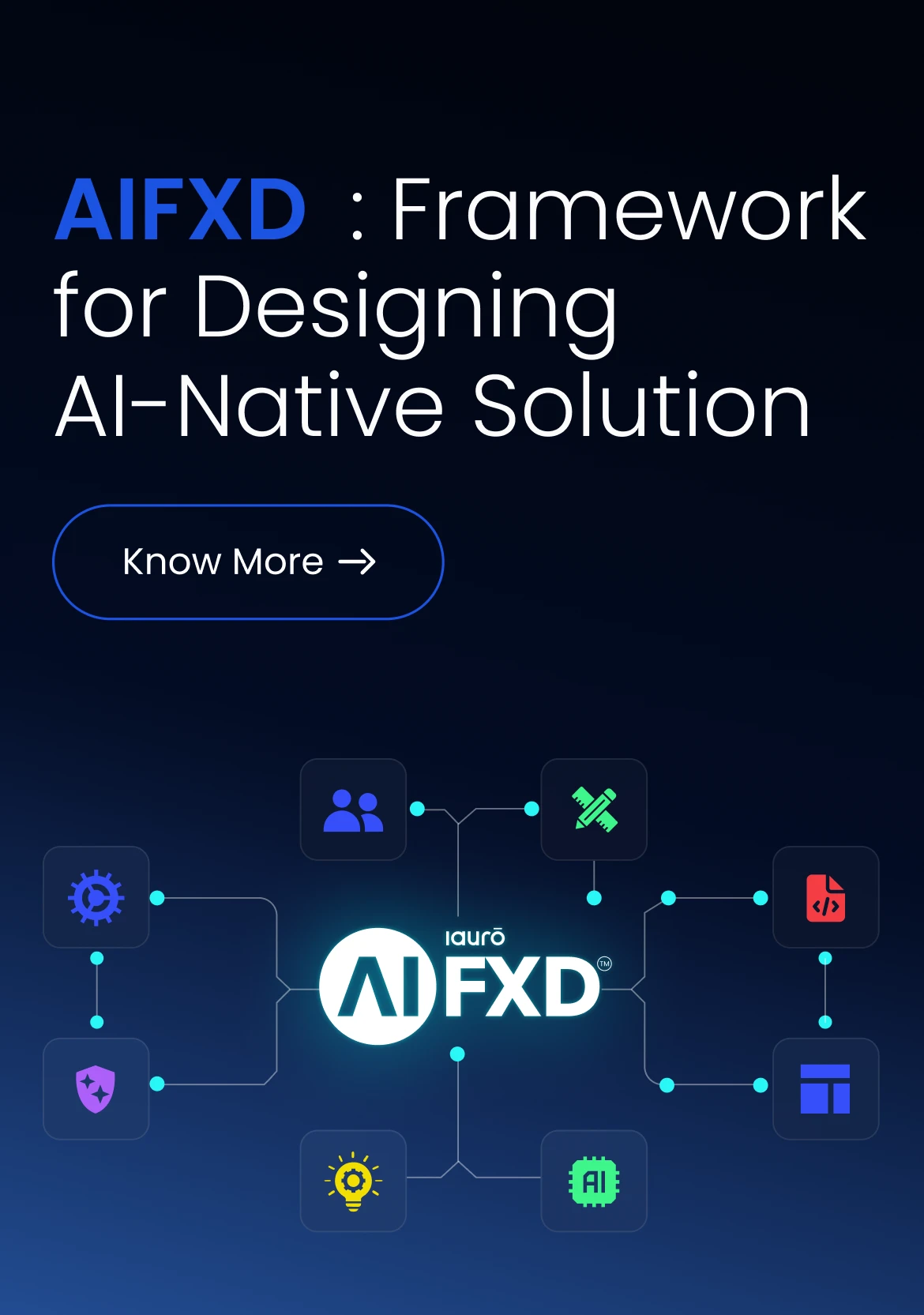Building AI-Native Solutions: What Businesses Get Wrong (And How to Get It Right)


There’s no shortage of ambition when it comes to AI. But the results? That’s a different story. Despite the hype, a staggering 70–85% of enterprise AI projects either fail to scale, stall after pilots, or never generate measurable ROI. And the reasons aren’t just technical—they’re foundational.
One core issue? Businesses are trying to bolt AI on to legacy systems instead of building with AI at the center.
This is where the shift to AI-native solutions matters. But before we talk about how to get it right, we need to understand why so many are still getting it wrong.
Wait—What Does “AI-Native” Even Mean?
It’s easy to assume all AI-driven systems are cut from the same cloth—but they’re not. And the differences aren’t just semantic. Understanding what AI-native really means is the first step toward building systems that actually work at scale.
Let’s break it down. An AI-enabled system is essentially a traditional product with some AI capabilities added on. Think of an e-commerce platform that adds a recommendation engine, or a customer service portal that integrates a chatbot. The core system doesn’t change; AI is just… layered on.
An AI-first approach goes a bit further. Here, AI plays a central role in business strategy—companies start redesigning workflows and products around what AI can do. The mindset shifts, but often the underlying architecture doesn’t fully keep up. It’s still rooted in legacy systems and structures.
Now, contrast that with AI-native. This is a ground-up transformation. These systems are designed from scratch with AI as the foundational layer. That means the architecture, data flows, user experience, and business logic all assume AI is central—not optional. Intelligence isn’t something that’s added later. It’s the core mechanism driving decisions, automation, and learning.
Picture this: AI-enabled is like installing solar panels on a diesel-powered truck. AI-native is designing a Tesla. The latter isn’t just energy-efficient—it’s built around an entirely different logic, which allows it to operate smarter, faster, and more adaptively from day one.
AI-native systems don’t rely on static rules or manual tuning. They continuously learn. They’re context-aware. They scale without rework. And perhaps most importantly, they’re built to evolve as data, business conditions, and user needs shift. That’s what makes them future-ready—not just functional.
Where It Starts Falling Apart: The Common Missteps
1. AI as an Add-On, Not a Foundation
2. Neglecting Data Quality and Infrastructure
3. Skipping UX (Yes, It Still Matters)
4. Building Without Business Goals in Sight
Too often, AI projects are driven by the tech team instead of the business team. You end up with models optimized for precision but disconnected from KPIs. When business value isn’t part of the blueprint, even technically sound projects fall flat.
Let’s Talk About the Real Cost of Getting It Wrong
AI isn’t just another line item on your tech roadmap. Get it wrong, and you’re not just looking at a failed experiment—you’re staring at sunk costs, lost time, and reputational risk.
First, there’s pilot purgatory—where most enterprise AI initiatives get stuck. Teams build promising prototypes, run a few demos, maybe even impress a few stakeholders. But when it comes time to scale? Nothing moves. According to recent research, fewer than 30% of AI pilots ever make it into production. Many fizzle out due to technical debt, lack of integration readiness, or unclear ROI pathways. The cost? Wasted budget, missed opportunities, and skeptical executives who hesitate to back future AI initiatives.
Then comes the issue of technical overhead. Retrofitting AI into legacy systems is no small task. Every workaround you implement—from patching APIs to building ad-hoc data pipelines—adds complexity. Over time, these decisions accumulate into a tangled mess of code, middleware, and manual processes. That’s how you end up with systems that are fragile, expensive to maintain, and incapable of real-time responsiveness.
Let’s not forget user trust. When AI outputs are opaque, inconsistent, or simply wrong, users stop relying on them. Adoption stalls. Shadow processes emerge. And the very tools meant to accelerate performance end up slowing people down. If AI doesn’t fit how people work—or worse, if it undermines their decisions—it’s not just ineffective. It’s harmful.
And of course, there’s the opportunity cost. While you’re stuck wrangling one-off models or firefighting poor integrations, your competitors are moving faster. They’re making smarter decisions. They’re launching adaptive products. They’re out-learning and out-operating you. AI-native isn’t just about getting it right—it’s about not falling behind.
In short: the cost of getting AI wrong isn’t theoretical. It’s painfully real. And it compounds over time.
What “Getting It Right” Looks Like
Getting AI right isn’t about building a more accurate model or finding the best open-source tool. It’s about designing systems that deliver continuous value—not just technical output.
In an AI-native setup, intelligence isn’t a layer—it’s the core decision logic. That means every system interaction, every workflow, and every user touchpoint is informed by adaptive intelligence. The model isn’t a backroom process. It’s embedded directly into how the system thinks and responds in real time.
It also means starting with the data—but not just any data. AI-native systems require infrastructure that supports real-time access, distributed storage, traceability, and governance. Without that foundation, even the best models will fail. In fact, over 70% of AI failures today trace back to poor data readiness. Getting it right means treating your data architecture not as a support system, but as a strategic asset.
Then there’s experience design. You can’t just build something smart—you have to make it usable. AI-native systems are explainable by design. Users get clear, contextual answers, not black-box predictions. Interfaces are tailored to roles, with just enough control and just enough automation. That’s what drives trust. And trust drives adoption.
Equally important is alignment with business value. AI-native teams don’t start with “what model should we use?” They start with “what outcome are we trying to improve?” Every choice—architecture, interface, training data, evaluation metrics—is guided by that north star. Whether it’s reducing fraud, accelerating onboarding, or improving forecast accuracy, success is defined in business terms, not technical ones.
And finally, getting it right means building for change. AI-native platforms aren’t frozen in time. They’re built to learn continuously—through embedded feedback loops, human-in-the-loop corrections, and usage analytics. This is what lets them adapt as user behavior evolves, as data shifts, and as strategies change.
So what does “right” look like? It looks like systems that are trusted, adopted, continuously improving, and directly tied to how the business wins.
A Playbook for Building AI-Native Systems
If you’re serious about building AI-native systems, the process starts long before the first line of code. It starts with choosing the right problems to solve. Too many AI projects begin with a shiny technology and go looking for a problem. That’s backwards. Instead, start by identifying a real, measurable business challenge—something that impacts cost, efficiency, customer experience, or revenue. Then ask: Is AI actually the right approach here? You’d be surprised how often the answer is no.
Once you’ve identified the right use case, turn your attention to data. No amount of modeling will save you if your data is fragmented, unstructured, or incomplete. Conduct a thorough audit—not just to see if you have enough data, but to assess its quality, consistency, lineage, and accessibility. Ensure you’ve got the infrastructure to support clean, real-time pipelines, and fix any issues before you even think about building a model. Treat data readiness as a gate, not a checkbox.
Designing with explainability in mind is another step most skip—and regret later. Users need to understand how the system works, even if they aren’t technical. That means clear reasoning behind AI outputs, confidence scores, and a way to see why a decision was made. Explainability isn’t about adding tooltips—it’s about building trust, and trust is everything when you’re automating decisions.
None of this can be done in silos. The most successful AI-native projects are cross-functional from day one. That means getting product managers, data engineers, UX designers, and business leaders working together—not handing off work from one team to the next. When everyone brings their expertise to the table early, the solution is far more aligned with real business workflows.
Measurement is another weak spot. Don’t just track precision and recall. Track time-to-decision, reduction in manual effort, impact on revenue, and cost saved. If you’re not tying AI to business value, you’re just building science projects. Establish these KPIs early and build your feedback loops around them.
Yes, pilots are useful. But they shouldn’t be dead ends. From the very beginning, design your pilots with scalability in mind. What data will you need at scale? What infrastructure is required? Who will maintain it? Think like you’re launching a product, not just testing a theory.
And finally, treat feedback as fuel. Your models, your interfaces, your assumptions—they all need real-world interaction to improve. Create systems that capture user feedback, monitor performance, and continuously retrain. Learning doesn’t stop at deployment. That’s where it really begins.
How iauro Helps Businesses Reimagine with AI-Native Solutions
At iauro, we don’t believe in simply adding AI to an existing system and calling it innovation. We believe AI needs to be part of the foundation—built into the logic, the experience, and the outcomes from day one. That’s what we mean when we say we help businesses reimagine themselves through AI-native digital solutions.
Our approach always starts with understanding your business, not just your tech stack. We look at your workflows, your data environment, your customers, and your goals. From there, we help you identify which parts of your business can genuinely benefit from intelligence that adapts and learns—not just automates. Then we co-create solutions that embed AI where it matters most.
We approach every problem with a product mindset. That means we’re not here to build throwaway prototypes—we build systems that can evolve, scale, and deliver business value from the start. We focus on long-term outcomes, not one-off deployments. And we bring this thinking to every project, whether it’s a predictive model, an intelligent assistant, or a full AI-native platform.
Experience is at the core of what we do. AI might do the heavy lifting, but humans still have to trust it, use it, and benefit from it. So we obsess over usability, role-awareness, and clarity. Our design thinking approach ensures that interfaces are intuitive, interactions are transparent, and the user remains in control. We build for the people who’ll use the system—not just the people who build it.
And of course, technology matters too. We bring deep AI engineering expertise, but also the architectural skills to design modular, API-first, cloud-native systems that are resilient, adaptive, and future-ready. We know how to build for continuous learning, explainability, and governance—because these aren’t add-ons. They’re part of getting it right.
With iauro, businesses don’t just “adopt” AI. They evolve with it—structurally, operationally, and culturally. That’s what it means to reimagine a business in the age of intelligence.
Ready to build smarter—not just faster?
If you’re rethinking your AI strategy or planning your next digital initiative, start with a foundation that’s built to scale.
Talk to our experts about building AI-native systems that actually deliver.
Connect with us at sales@iauro.com or visit www.iauro.com to get started.

